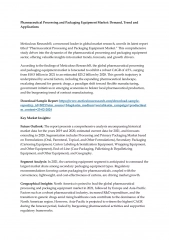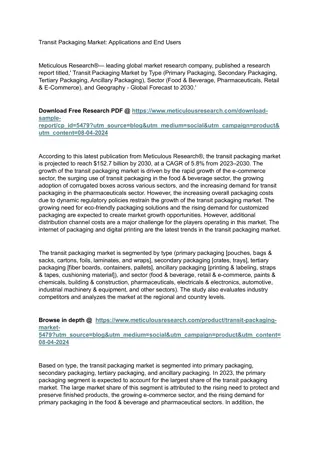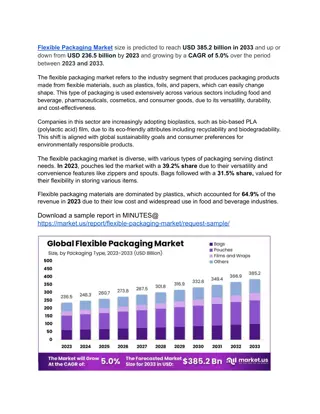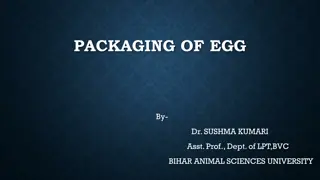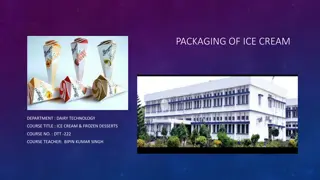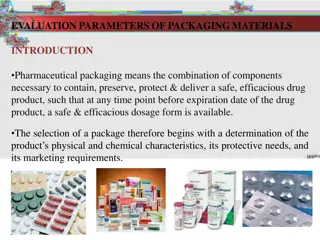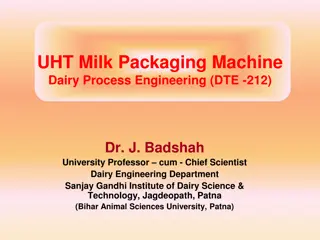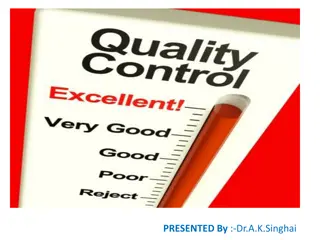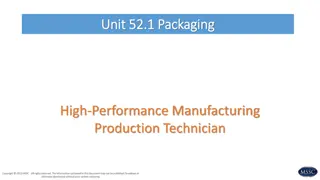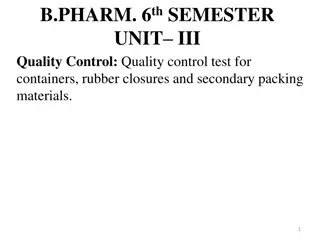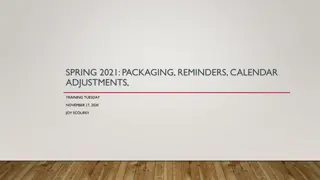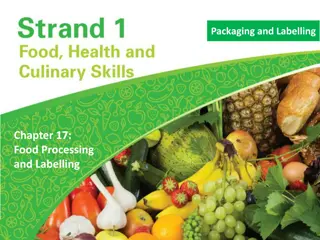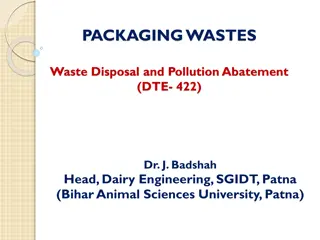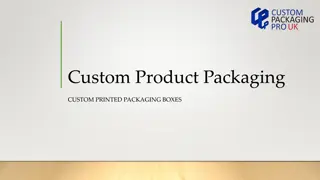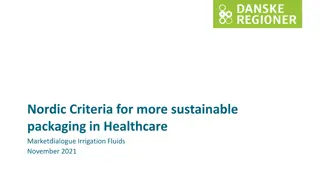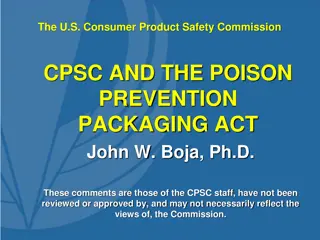Evolution of Industrial Packaging: Trends and Challenges
The rigid industrial packaging market is robust, dominated by a few key players. Mauser/NCG stands out with a global presence and substantial sales. The industry has undergone significant changes in life cycle management, adapting to customer needs and environmental pressures over the years.
Download Presentation

Please find below an Image/Link to download the presentation.
The content on the website is provided AS IS for your information and personal use only. It may not be sold, licensed, or shared on other websites without obtaining consent from the author. Download presentation by click this link. If you encounter any issues during the download, it is possible that the publisher has removed the file from their server.
E N D
Presentation Transcript
State of the Union Industrial Packaging
RIGID INDUSTRIAL PACKAGING MARKET Rigid packaging is a structurally attractive market, with high degree of Rigid Industrial Packaging Market consolidation and a stable competitive environment Market size of $7bn, which grows in line with end-markets Growth at GDP-like rates in mature markets, with additional growth upside from emerging markets, product lines Prices driven by movements in input prices, which are typically contractually passed through to customers Net pricing does not move significantly over time, providing stable profitability levels Market is dominated by three large players Little differentiation between three leaders, but significant cost and service advantages compared to small players Each of the three leaders has a defined leadership area to protect, so stable competitive dynamic Mature products (plastic drums 40 years, IBC 20 years, metal drums 100 years), and no disruptions likely Solid customer base basically unchanged across the globe 2
MAUSER/NCG AT A GLANCE Approx 5000 employees 1000 $ 1.6 billion sales Over 100 35 facilities 18 12 countries 5 continents 3
DEVELOPING LIFE CYCLE MANAGEMENT OF INDUSTRIAL CONTAINERS Challenges along the road RECO industry was well established as a stand alone business Far less stringent rules and regulations prior to 1980 s Small RECO companies that serviced local customers, not a national presence New manufacturers had the singular goal of voluminous sales Sustainability was merely a buzz word 4
DEVELOPING LIFE CYCLE MANAGEMENT OF INDUSTRIAL CONTAINERS IBCs became significant in the early 1990 s and at that time were marketed as a one way container Market Customers needed a solution to the problem of removing empty IBCs RECO companies were still focused on drums only Container customers pushed manufacturers into providing a practical solution for the removal of the empty containers 5
DEVELOPING LIFE CYCLE MANAGEMENT OF INDUSTRIAL CONTAINERS The TICKET Program is introduced call an 800 number and your IBCs can be removed - for a price Manufacturers began relationships with RECO companies for the collection, cleaning, rebottling or disposal of IBCs Costs for the programs were high, but the costs for IBCs were solid IBCs steadily garnered market share away from drums IBCs began to be manufactured as multi-trip rather than one way containers Collection for reconditioning and rebottling began to grow substantially 6
DEVELOPING LIFE CYCLE MANAGEMENT OF INDUSTRIAL CONTAINERS What began as a necessity has grown into business model we as NCG/MAUSER call: Life Cycle Management for Industrial Containers Total Recollect Approach 7
MOVING DOWN THE ROAD . . . RECO companies have expanded their service portfolios to include IBC cleaning and rebottling during the last 10-15 years Mauser was the leading manufacturer to first successfully integrate the RECO service function by acquiring NCG and subsequent global roll out New regulatory requirements were established and even the battle over cross-bottling could not stop this very much appreciated service model 8
MOVING DOWN THE ROAD . . .NOT SO SMOOTH! Integrating a service company into a manufacturing company was challenging Aligning significantly different attitudes and selling approaches proved arduous The vision needed to be adjusted Customers eventually did see the very positive impact of sustainability Finally the value of used industrial containers increased and Reco was now viewed as a cost friendly, environmentally sound solution 9
TAKING ON THE WORLD US was the Driver Europe and South America soon followed with Asia on the way to being developed. In the meantime, there are no sales without a return program. 10
HOW CAN WE SECURE CONTINUED POSITIVE GROWTH ? Level playing field Everyone needs to play by the same rules Total compliance to all environmental regulations-no company should be able to circumvent Close the real cycle Multiple companies participate Cradle to Cradle reprocessing PE for use in Infinity drums 11
THANK YOU FOR YOUR ATTENTION! 12



